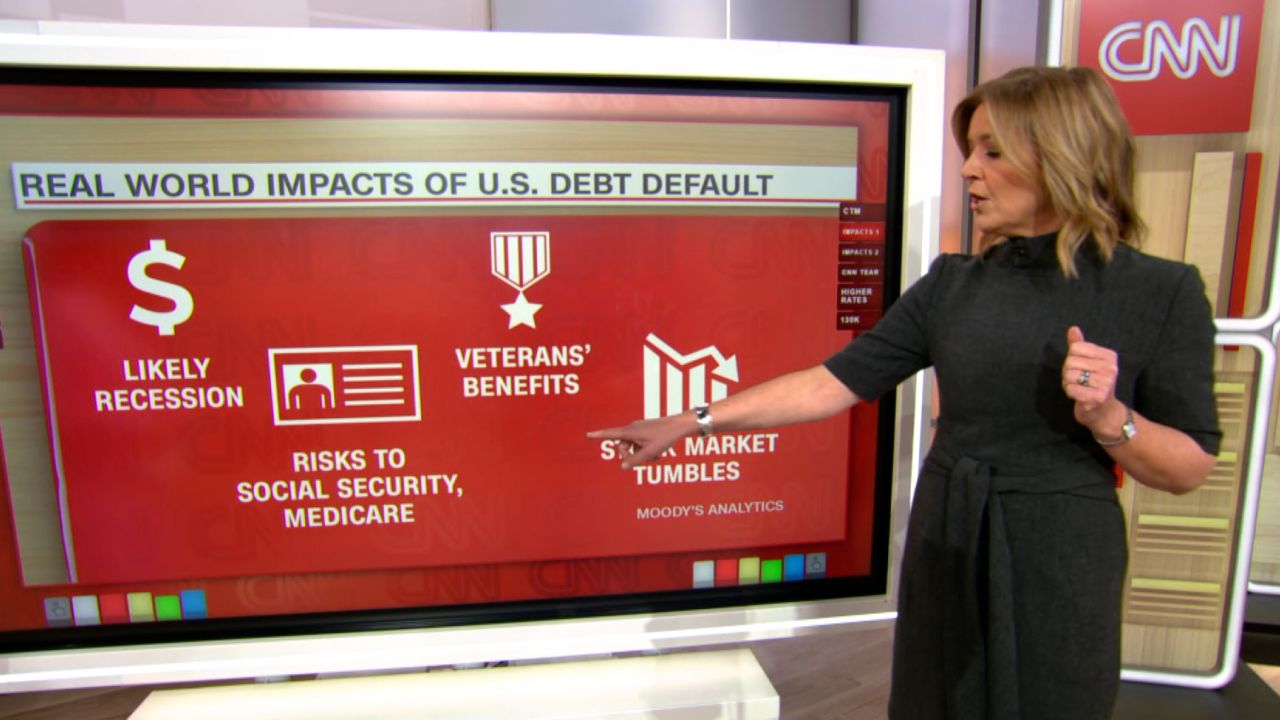Two new analyses are backing Treasury Secretary Janet Yellen’s forecast that the nation could default on its debt – and unleash economic chaos – as soon as early June if Congress doesn’t act.
The projections, which are roughly in line with those issued last week by Yellen and the Congressional Budget Office, add to the pressure on House Republicans and President Joe Biden, who may have only a few weeks to hammer out their vast differences over addressing the debt ceiling. Biden is meeting with congressional leaders Tuesday to work on a deal, the first movement in months.
A weaker-than-expected tax season, spurred in part by disaster-related filing extensions for much of California and parts of Alabama and Georgia, has increased the odds that Treasury won’t have enough funds to pay the federal government’s bills in early June, according to an updated estimate released Tuesday by the Bipartisan Policy Center.
“The coming weeks are critical for assessing the strength of government cash flows,” said Shai Akabas, the center’s director of economic policy. “If a solution is not reached before June, policymakers may be playing daily Russian roulette with the full faith and credit of the United States, risking financial disaster for their constituents and the country.”
The so-called X-date, when the US could default, could arrive between early June and early August, according to the center. In February, it projected the default could take place during the summer or early fall.
Meanwhile, Moody’s Analytics last week pegged the default date at June 8, significantly earlier than its prior projection of August 18. But the X-date could hit as soon as June 1 or as late as early August, according to that analysis.
Cumulative income tax receipts are tracking more than 30% below collections a year ago, in part because of weaker capital gains revenue as a result of last year’s stock market declines, Moody’s said.
Tax receipts are running $150 billion below government projections for fiscal year 2023, which began in October, according to a report issued Monday by the Penn Wharton Budget Model, an independent research organization. This is due mainly to a drop in capital gains income and weakening corporate profit margins.
In Yellen’s letter to House Speaker Kevin McCarthy last week, she said the exact date of default is impossible to pinpoint since the amount of revenue the federal government collects and the amount it spends is variable. She noted it could come as early as June 1 but could be a number of weeks later.
Even if the Treasury Department doesn’t completely run out of funds, it could be difficult for the agency to manage its payments and stay below the debt ceiling when it only has a tiny cash balance, Akabas said. How much revenue the agency collects in the next three weeks is critical to whether the nation will default next month.
“Treasury is skating on very thin ice in the month of June. If it’s $10, $20, $30, $40 billion below what we anticipate, that means that they’re really going to be in a crunch situation,” he said of revenue.
Unable to keep borrowing to pay the nation’s obligations, the Treasury Department has been using cash and “extraordinary measures” to avoid default since the US hit its $31.4 trillion debt ceiling in January.
If government collections wind up being enough to keep Treasury’s coffers flush through early June, then it’s likely the government won’t default until later in the summer. The agency will get another injection of funds from second quarter estimated tax payments, which are due June 15, and from an extraordinary measure that becomes available at the end of that month.
Consequences already being felt
Investors are growing skittish about the debt ceiling impasse and a potential default.
Last week, the Treasury Department sold $50 billion of four-week securities scheduled to mature on June 6 at a record 5.84%, the highest yield for any Treasury Department bill auction since 2000, Akabas noted.
“Even now, the looming deadline is raising costs to the government and therefore, to all taxpayers,” he said.
If the government was to default for the first time, it would trigger an economic meltdown in the US and send shock waves through the global financial system.
If the default lasts for about a week, then close to 1 million jobs would be lost, including in the financial sector, which would be hard hit by the stock market declines, according to Moody’s. Also, the unemployment rate would jump to about 5% and the economy would contract by nearly half a percent.
But if the impasse dragged on for six weeks, then more than 7 million jobs would be lost, the unemployment rate would soar above 8% and the economy would decline by more than 4%, according to Moody’s. The effects would still be felt a decade from now.






